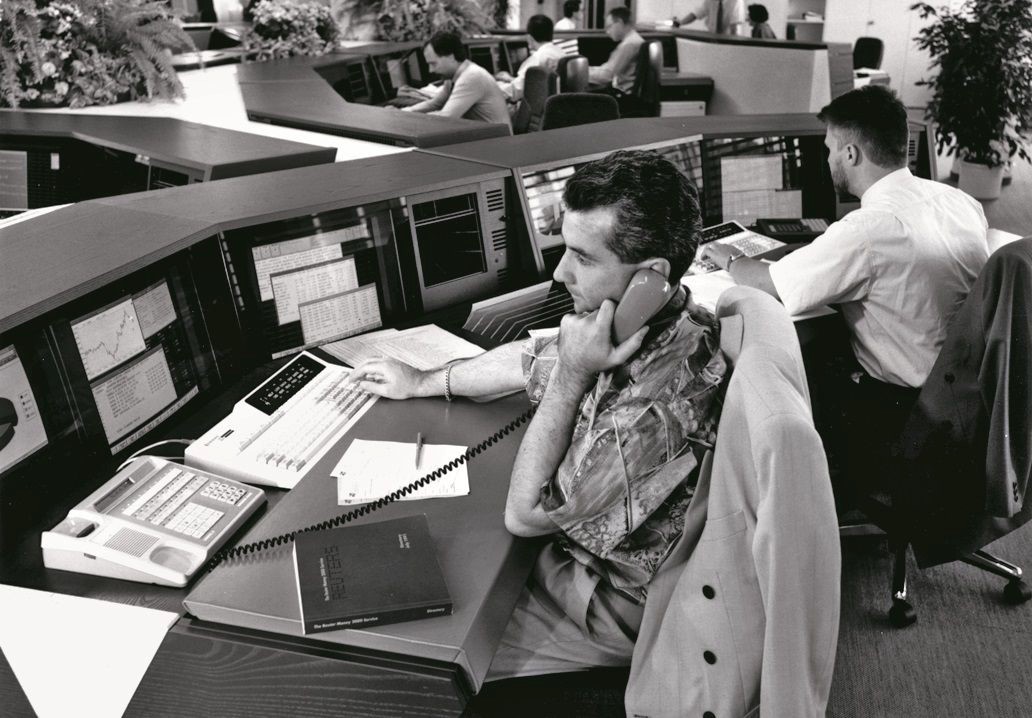Information checkedInformation unaudited Information geprüft Information ungeprüft Savings account passbooks and Y2K
The last three decades have not only shaped Liechtenstein socially and economically, but have also fundamentally changed its banking landscape. From trust in passbooks to digitalisation – letʼs take a look back at the developments, challenges, and anecdotes that have shaped the banking industry of yesterday and today.
Liechtenstein, the small yet distinguished financial centre in the heart of Europe, has undergone significant change over the past 30 years. In the early 1990s, the banking world was still shaped by traditional values such as discretion, security, and personal client visits. The savings account passbook enjoyed cult status at the time, not just in Liechtenstein – it was a symbolic expression of stability, focused less on returns and more on the safekeeping of savings. But then came digitalisation – and with it, the first major upheaval.
Paper files vs. online banking
Who doesnʼt remember the days when banking meant a personal visit to the counter? Client advisors often knew their clients for generations. There were no emails or online tools – client data was stored in thick paper files and updated as needed. It was a time-consuming and error-prone process that required the utmost care from employees.
Handwritten passbooks were soon replaced by computer printouts. And with the advent of the internet in the mid-1990s, a new era began – one that was initially met with scepticism. Online banking was viewed with caution at first, as many clients were uncertain about its security. Some feared that their money could vanish with a single click.
Yet the advantages soon became clear and remain undeniable today: 24/7 account access, fast transactions, and less paperwork. In the beginning, it was mainly younger clients who embraced these new possibilities. Today, online banking is an essential part of daily life, with mobile apps and payment services further enhancing convenience for everyone.
New Yearʼs Eve 1999
The turn of the year from 1999 to 2000 was a landmark moment in the history of digitalisation. Y2K, or the “millennium bug”, caused sleepless nights for IT departments worldwide. Many banks feared that their computer systems would fail to process the year 2000 correctly, as older programs often stored years using only two digits. Entire teams had to work through New Yearʼs Eve, bracing for potential system failures – which, as we now know, didnʼt end up happening.
Currencies and equity markets
In addition to regulation and digitalisation, the evolution of international currency and equity markets has also shaped the banking landscape in Liechtenstein. In the early 1990s, the Swiss franc was the currency of choice for many – not only for locals but also for international clients. Trust in the stability of the franc was a given, and to this day, its reputation as a safe-haven currency remains unchallenged.
The introduction of the euro in the European Union in 1999 brought change. While it created new opportunities, it also presented banks with fresh challenges, such as updating their systems to accommodate the new currency.
Equity markets, too, have seen their share of highs and lows over the past three decades. From the dotcom bubble in the early 2000s to the global financial crisis of 2008, banks have had to navigate their clients through turbulent times. “Sometimes, it was a real balancing act between risk and security,” recalls one employee. “But it was precisely in those moments that the importance of personal advice became clear.”
Focus on the human being
Despite all the digitalisation and automation, one thing has not changed: Banks remain institutions of trust. Especially in a small country like Liechtenstein, where personal relationships play a key role, banks continue to prioritise the human factor. At the end of the day, our clients want a trusted contact who understands their needs – whether they are investing in equities, bonds, or cryptocurrencies.
But one thing is certain: Change will continue. Whether through AI-driven advice, sustainable investments, or further blockchain solutions, the next 30 years promise to be just as dynamic. And while much will evolve, the core principle remains the same: It is always about building trust.

